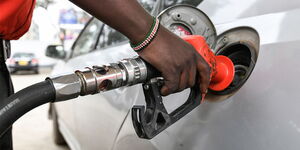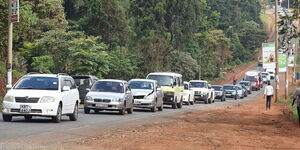Millions of used vehicles exported from Europe, the USA and Japan to Kenya are hindering efforts to combat climate change and growth of local industries according to the government.
To this effect, Kenya plans to phase out used cars, vans and minibuses from the second-hand market in 2 years time.
At the start of 2019, the government advertised the implementation of the National Automotive Policy aimed at supporting locally assembled vehicles.
According to the plan, the age limit of imported passenger vehicles was to be progressively raised to expand the market for vehicles assembled in Kenya.
The project was to be implemented from 8 years to 5 years in 2019; from 5 years to 3 years in 2021 and; from 3 years to zero by 2023.
This effectively means that players in the used car business would eventually be out of business in the next 2 years.
To compound the crisis facing the industry estimated to rake in Ksh60 billion each year, there is an ongoing vessel scarcity crisis that could potentially result in losses worth hundreds of millions.
As it stands, cars manufactured in 2013 or any year that precedes that would not be allowed into the country after December 31, 2020.
Used car sellers in Kenya who had already placed orders and paid for vehicles that fall in that bracket pleaded with the Kenya Bureau of Standards (Kebs) and the Industrialisation, Trade and Enterprise Development ministry, for a 3-month extension, to March 2021.
With just 22 days left until the deadline takes effect, it is now practically impossible to have the cars shipped to Kenya.
It takes between 26 to 30 days to sail from Japan to Kenya while vessels moving between Europe and Mombasa take between 20 and 40 days.
The Covid-19 pandemic has resulted in fewer ships available to ferry such consignments.
According to the UNEP report titled Used Vehicles and the Environment 2020, more than 95% of vehicles currently being added to Kenya’s rapidly growing light-duty vehicle fleet are imported used vehicles, mainly from Japan.
Countries prohibit imports of used vehicles for several reasons: environment, health, and safety concerns. But they also do so to support and/or protect a domestic vehicle manufacturing industry.
Most countries that have blanket restrictions on the import of used vehicles have exemptions for diplomats, vintage and racing vehicle collectors, antique and special purpose vehicles including vehicles adapted for the physically disabled and public service vehicles.
All vehicles owners in Kenya are required to pay several taxes as a percentage of the vehicles customs value before the vehicles can be registered.
These are; Import duty (25%), Excise Duty (between 20-30%) depending on vehicle engine capacity), Value Added Tax (16%), Import Declaration Fees (2%), and Railway Development Levy (1.5%). Electric vehicles have a reduced Excise Duty (10%).












